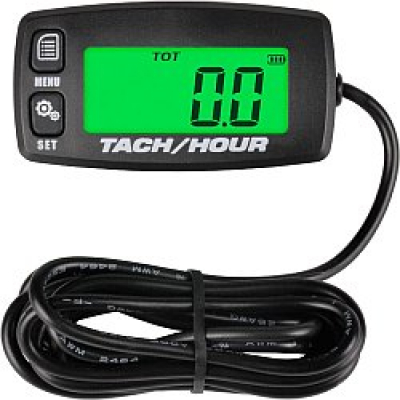Adjusting the carburetor mixture without an exhaust gas tester
…. A guide for experienced mechanics
…. is really not an easy topic, but you can adjust the mixture relatively well without an exhaust gas tester.
In addition to a synchronization tester, you also need a rev counter that is as accurate as possible.
Unfortunately, the instrument in the cockpit is unsuitable for this. It is too inaccurate and too far away.
There are inductive tachometers from the lawnmower sector like the one in the picture, which has an inductive tap for the ignition cable and then displays the speed relatively accurately. An accuracy of 10 rpm is specified here and that is sufficient.
 Rev counter from Amazon für 20.35 EUR
Rev counter from Amazon für 20.35 EUR
Provided that the carburetors are in good condition, preferably overhauled, all wearing parts have been replaced and the throttle valves are correctly centered
The procedure is as follows:
you synchronize the preset carburettors as precisely as possible (pneumatically) and set the idle speed to 1700 rpm.
The engine speed is then set to the highest speed according to the rev counter using the mixture screws without closing the equalizer tube.
It may be necessary to readjust the idle speed back to 1700 rpm.
It may also be necessary to turn the mixture screws further down because the standard setting (1.5 turns down) was too lean.
However, as the mixture is now a little too rich, turn the mixture screws alternately on both carburettors (maximum 1/12 turns) very slowly leaner - i.e. further in clockwise - until you notice a drop in speed of 20 rpm (hence the exact rev counter).
If the transition bores have been sealed, the basic setting of the idle mixture screws is approx. 2.0 to 2.5 turns.
It is also not necessary to set the mixture screws slightly leaner once you have reached the highest idle speed, as the engine does not continue to enrichen in the subsequent transition area.
The engine should now run properly and you can still adjust the idle speed for flight operation - i.e. possibly reduce it slightly.
What is important is to constantly check whether the carburettors are still correctly synchronized - pneumatically.
Attention danger to life !
Working with a running propeller is life-threatening !
Anyone working on a running aircraft engine should always be aware of this and work with extreme concentration.
If in doubt, never work on a running propeller!
